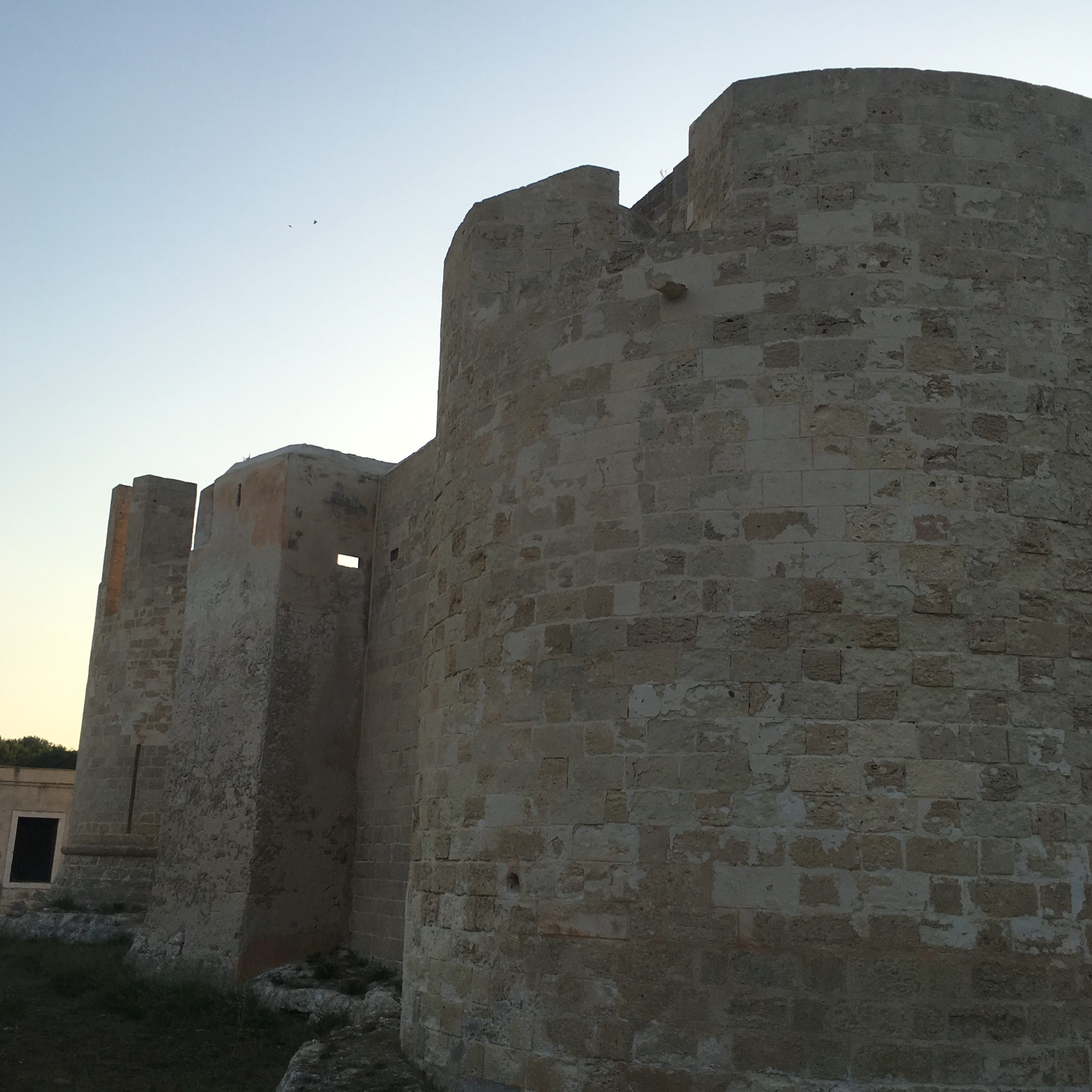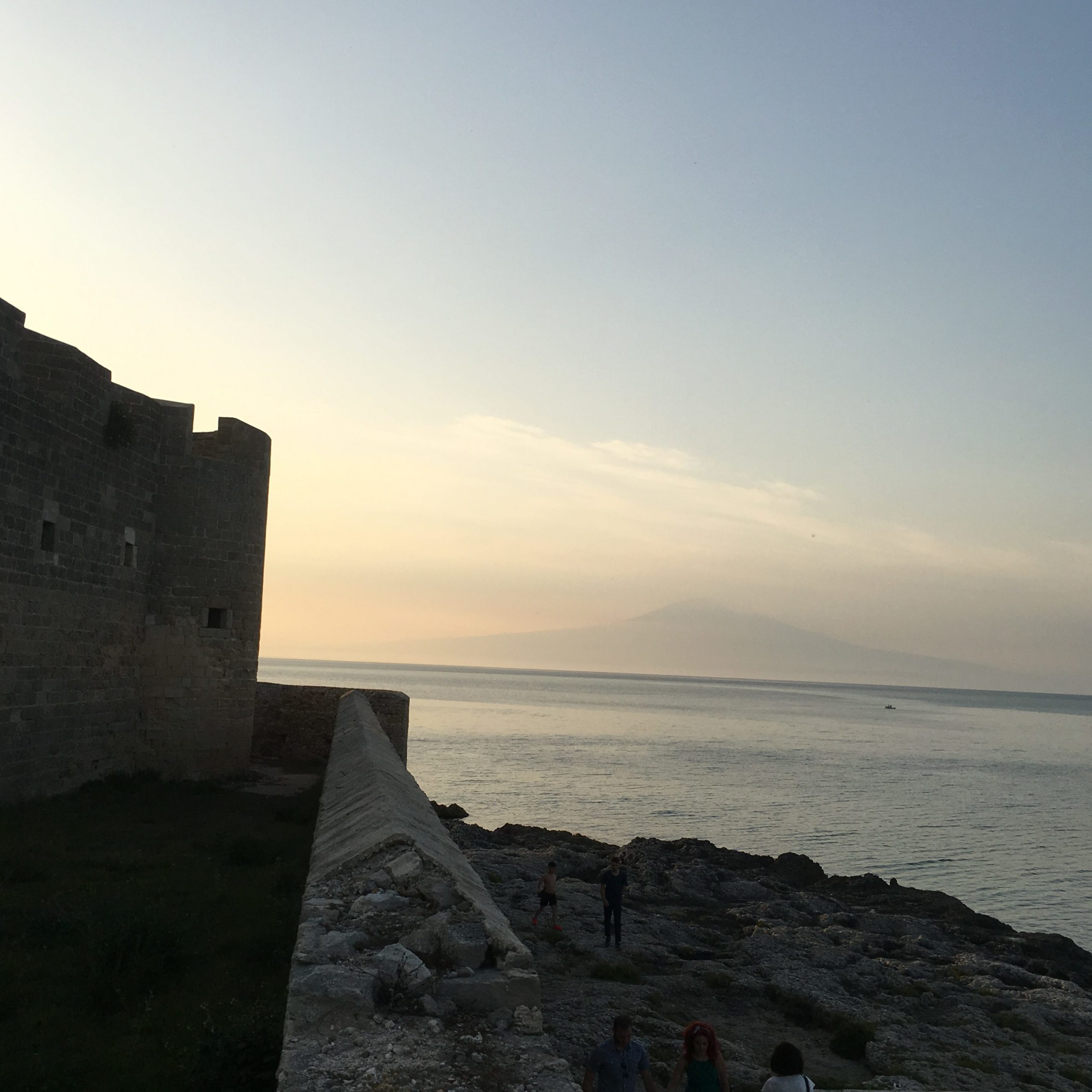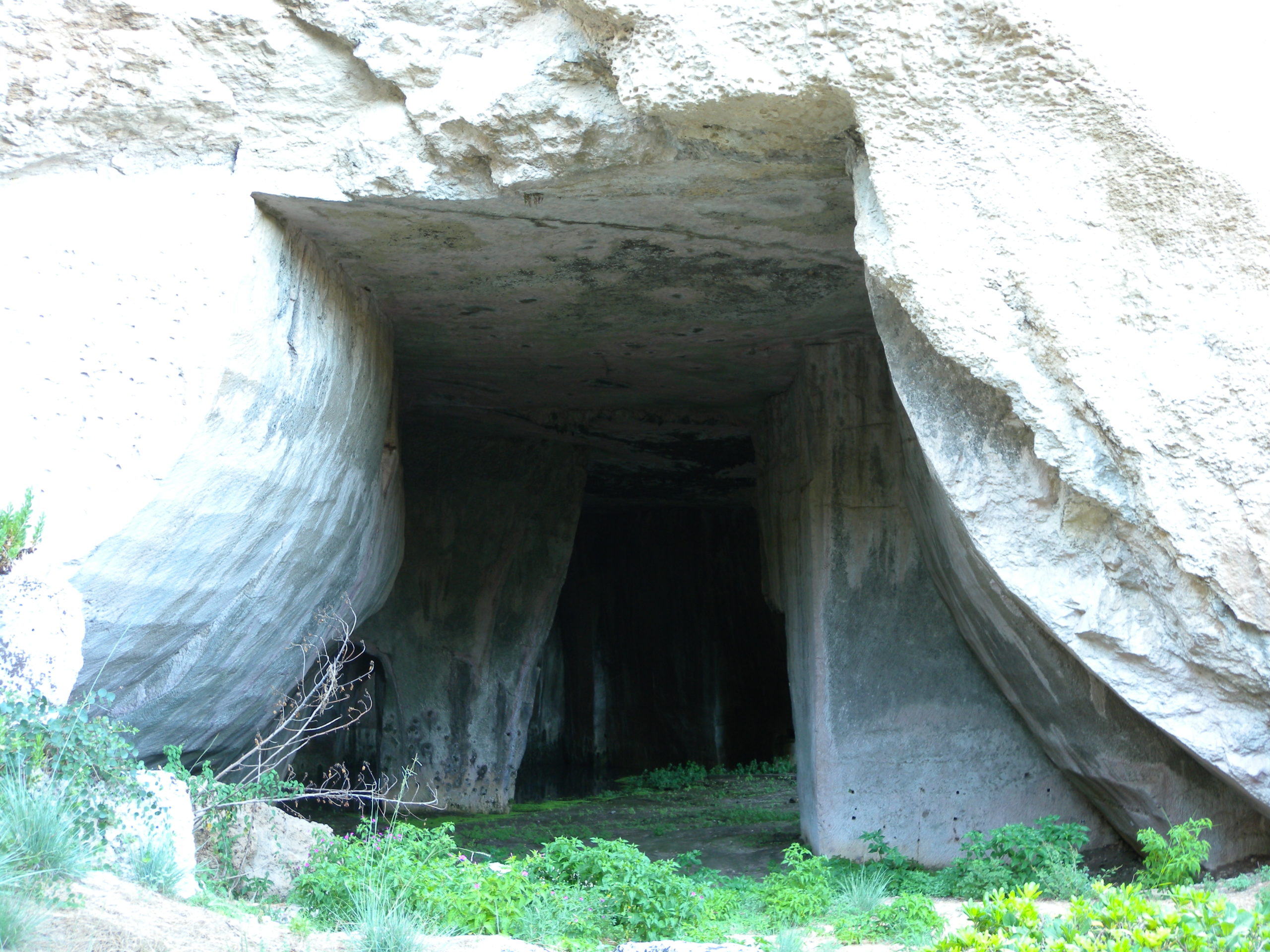Maniace Castle
After a thorough structural study by Frederick II, between 1232 and 1240 an imposing construction system was created on the site of previous fortification structures called “Castello Maniace”, which was one of the first castles that Frederick himself had built in Sicily.
Initially this fortification was actually a temple, built by the Greeks, dedicated to Hera which later disappeared under the sumptuous residence of Verre, and then became a stronghold with the colonization of the Byzantines before the current fortification of Federico II
which is the only trace that we keep of the various transformations.
In all the centuries, this site was a key point of great strategic importance for the defence of the city; in fact, it rises at the marginal entrance of the Port of Siracusa,
on the extreme tip of the Island of Ortigia, in front of the promontory of Plemmirio. The traditional denomination of origin, associates the origin of the name to the Byzantine general George Maniakes who conquered Syracuse in 1038, freeing it from the Arabs, starting on this same site the construction of a fortress probably never completed.
Despite the serious damage suffered by the earthquake of 1693, the castle retains intact its thirteenth-century external structure. Significant damage was caused by the explosion of the powder warehouse in 1704, which destroyed the north-west wing of the castle.
This fortification was originally accessible only by a drawbridge (filled in 500) that made it completely impenetrable and was surrounded by a moat that fully met the needs of defense. The recesses for the drawbridge housing are still visible.
Before the current restoration, this fortification looked like a stone quarry abandoned after being excavated.
The building was built using three different types of stone: limestone, lava (used for cutting parallelepiped ashlars embedded in an L shape) and sandstone (used to fill the sides).
Its structure is 51 metres square and 12 metres high, closed by a mighty perimeter wall (3.5 metres thick) with four cylindrical towers at the corners from which spiral staircases with 52 stone steps arranged in a joint take place, which still today represent authentic masterpieces of medieval engineering; each of these staircases was illuminated by a suggestive light from seven openers.
The interior was planned as a modular grid of five basic elements on each side, corresponding to meshes covered by a cross vault, closed to form a portico with a central atrium. In the majestic curtain wall you can still find the graceful gothic silhouettes of the windows and on the north side the thirteenth-century marble portal; from the same period and in the same style as the portal and the trifola of the west side of which few but interesting fragments remain.
It is accessed through a splendid ogival portal, covered with polychrome marble and surmounted by the Spanish coat of arms of 1614 (Porta Vermexiana, ancient access to the drawbridge).
On either side of the portal there are two niches, intended to contain, the two bronze rams of IV BC from the Temple of Hera, which were placed there by Giorgio Maniace;
we keep only one that is now visible at the Salinas Museum in Palermo, the other was melted during the uprisings of 1848 to build a cannon.
The interior of this fortification, was presented as a single room defined by 16 free columns, 4 half angular columns and 16 half perimeter columns, which supported 25 bays of equal size with cross vaults and illuminated by single-lancet windows that were arranged around a large square courtyard open center, this geometric shape and the axis of the building facing Mecca refer to the Arabic tradition while some elements such as the refinement of decorative details and the planimetric layout also refer to French stretches. The unusual chequered arrangement of the columns, typical of fortified mosques and extraneous to western architecture, not only had no military function, but is still not reflected in any other Slavic construction of Frederick: hence its originality.
The presence of the single immense hall, measuring 2500 square meters, surrounded by columns on the ground floor, given its structure would be inconceivable with the ancient residential function of the castle, if the original existence of an upper floor (completely collapsed) used as a dwelling were not admitted. Plan whose real existence would have been accepted, as well as for logical reasons, even the obvious architectural artifacts that have nothing to do with the ground floor later the castle was used for military purposes.
The centre is exalted by the four angular columns, bundles of granite marble (only two survivors, could suggest the existence of a throne, which in Frederick’s absolutist vision exalted the egocentric presence of his figure.
Inside the castle, the dividing walls and the mezzanine floor added in later periods have partially masked the columns still existing with their highly worked capitals with hooked leaves in which it is still possible to identify four zoomorphic figures, arranged two on each side, of probable symbolic significance (two figures of lions and a hippogriph), and with their cross-shaped bays of the ancient Swabian structure (brought to light by a temporary restoration).
On the south-east side is the secondary portal of the castle. Near the west tower there is the access to the famous “bath of the queen” which can be reached by a small door through a staircase carved into the rock with a difference in height of 9 meters, at the bottom almost at sea level there is a room of about 1 meter on each side, a room with seats and marble tub always filled with spring water and soft. You can still see on the walls of small excavations so called “niches” where they were probably placed the lanterns. It is one of the many natural springs present in the island of Ortigia as that of the fountain of Arethusa, the Eye of Zillicca and the three baths of Giudecca.

The interior of the North Tower, which was damaged in 1704 by an explosion and later rebuilt without the spiral staircase and without the seven loopholes, was used as a prison by the Bourbons. In the four corners of the castle opened four huge fireplaces 8 meters high and 7.50 meters wide (which ensured the heating of the environment), today the least damaged is located near the west tower and closely resembles those of the famous Castel del Monte in Puglia and that of the nearby palace Bellomo.
After the unification of Italy it has continued to be a military structure.
To this day, the Castle preserves the mystery, as different construction data that should characterize and outline its function are not certain.
Location: Via Castello Maniace, 51 – Isola di Ortigia – Siracusa
Contacts: +39 0931 4508211
OPENING HOURS UPDATE ON 25 APRLE 2019
Prima domenica di ogni mese ingresso libero.
OPENING HOURS
Location: Via Castello Maniace, 51 – Island of Ortigia – Syracuse
Contacts: +39 0931 4508211
First Sunday of each month free entry.
VISITING HOURS: from 8,30 am to 12,30 noon



